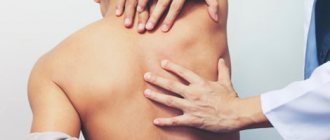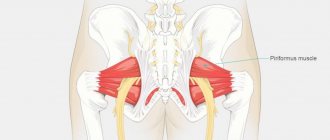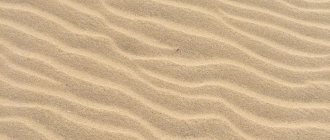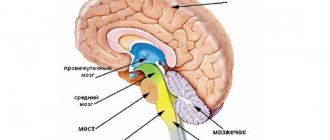In Dahl's dictionary
m. side of the head, skull, between the ear and forehead; braid; a small depression in this place, above the cheekbone. | Hair is above this place, between the ear and forehead. Trim your temples. Give it to your hands, it will be easier on your temples. For whiskey, and in a vice. Once cool, tap the whiskey. Someone is being stroked on the head, and I’m being stroked by the temple. | Chicken thief. head hair in general. His temples are black and red. Temporal, temple, related to the temple. Temporal bone, lateral part of the skull, flat bone, adjacent with a suture to the forehead, parietal, occipital and main bones; from it goes, under the underside of the brain, a stony process, in the solid bone of which the entire internal ear is located. Viscous, characterized by an angular structure of the head at the temples, or long, tousled hair on them.
Haircut technology
The creation of shaved elements requires an appointment with an experienced, qualified craftsman. Only a talented hairdresser knows how to part the hair, to what level to leave the temples, what edging is best to choose. Select the optimal shape and length to highlight individual features.
Execution scheme:
- Divide your hair with two partings, central from forehead to neck and horizontal from temple to temple.
- Immediately select the areas for shaving, twist the strands with strands, and secure with clips.
- Start from the back of the head, if it is shaved, cut at the border of the occipital and crown zones.
- Divide the hair into narrow horizontal partings, highlight a strand in the center, and cut to the selected length.
- Process curls towards the crown, lengthening them by 1–2 mm.
- Then move to the temporal area, separate a part of the hair for shaving with a horizontal parting, and secure with clips. The rest, dividing into horizontal levels, should be cut with lengthening towards the face. It is important to periodically comb and check the symmetry of the strands.
- Then process the sections with thinning scissors.
- Using a clipper, shave the strands at the temples and the back of the head. Use a trimmer to trim the neck.
In Vasmer Max's dictionary
visok viska m., Ukrainian temple from hanging; see Zheltov, Federal Law 1876, issue. 1, p. 18. Even now, in many dialects, this word means hair hanging down at the temples (for example, in Tamb., Astra; cf. RFV 70, 131, 288), blr. viskata “slob with disheveled hair”, resin. (Dobrovolsky). From Russian borrowed in the face e. śviśka “temporal curl” (Paasonen, Mordv. Chrest. 132). •• (Otrembsky’s explanation *vis-ъ-kъ from *u̯īḱ-, cf. Latin cer-vix is completely erroneous; see LP 2, 1950, p. 256; see also the special work of Frisk, GHÅ, 57, 1951, No. 4. – T.)
How to choose
When choosing a haircut with shaved temples, you need to pay special attention to the oval of the face:
- A universal option is the oval shape, since it suits any hairstyle. There is an opportunity to safely experiment, since each time the face will look different, but always excellent.
- Representatives of the fairer sex with a rectangular oval face are best suited for long curls. If you want to make them shorter, you should keep your bangs long. Its purpose is to hide prominent cheekbones and give smoothness and softness to facial features.
- If you have a round face, then you should prefer haircuts with strands of different lengths. It is best to make them shorter on the front and sides. Bangs - elongated oblique solutions look great.
- Long curls at the back and bangs can soften the clear features of a square face. It should be made oblique and styled on one side.
- For short haircuts in the temple area, you can keep a short crew cut or shave off the curls altogether. However, it should be borne in mind that this will give the image impudence and a certain touch of aggressiveness.
Why does my temple on the left side hurt?
This pain occurs for various reasons: due to toothache or runny nose. The variety of diseases, the symptom of which is pain in the left temple area, is quite high.
Increased intracranial pressure, or vegetative-vascular dystonia (VSD), occurs in a large number of people. It often occurs in adolescent schoolchildren, students and adults, whose work is closely related to intense mental activity and stress, when getting out of bed, bending over or making sudden movements.
In the case of VSD, the pain in the temple seems to come from within, has a dull character, presses, the eye often twitches from above and radiates to the jaw.
Migraine
Migraines affect women and men aged 20-23 years and older. Migraines are often observed in women after childbirth or during hormonal fluctuations. The vessels swell and cause pain.
Migraine is a vascular disease affecting the veins and arteries, which has no cure, so you will only have to take painkillers to relieve vascular spasms from constant pain.
Most often, periodic pain caused by vascular diseases radiates to one temple and upper teeth. In this case, it is worth finding out what kind of disease the patient is suffering from and treating based on the diagnosis.
Why does an unpleasant feeling appear in the head due to hormones? Hormone surges in the body can have an extremely negative impact on its condition. Often, hormonal imbalances result in a number of problems, and manifest themselves in the form of a feeling that there is a shooting in the left side of the head. Therefore, if such symptoms are detected, an examination by an endocrinologist is required.
Allergies and infections
All the time, a swollen pain in the temple and in the eye on the left appears if the body signals a malfunction of the immune system process. In this case, secondary symptoms also appear: the left nostril is blocked or there is a knocking in the nose. If the immune system is weakened, various infections appear: sinus sinusitis and allergic reactions. In this case, tests are carried out for infectious diseases and allergens.
Arteritis
Arteritis is inflammation of the arteries of the brain. This is a dangerous disease that ends tragically. The walls of the inflamed arteries become thin and weak, and in advanced stages of the disease they can rupture, causing internal bleeding in the brain.
If you feel that you constantly have a headache in your left temple, spreading to the frontal lobe and left cheekbone, especially when it hurts to press on the temple, it is better not to put it off and immediately consult a doctor to rule out or confirm arteritis and start immediately to treatment.
Stroke
Pain in the temporal part of the head signals problems with the brain and cardiovascular system. One of these problems is stroke, or apoplexy.
If you experience sudden pain in your left temple, immediately check for other stroke symptoms. It could be:
- slurred speech;
- increasing burning of the skin;
- inability to smile or say your name;
- dizzy when bending forward or turning, everything floats before the eyes;
- inability to raise arms up;
- loss of consciousness;
- sudden facial asymmetry;
- numbness of toes.
If at least one of these symptoms accompanies pain in the left temple, the first thing you or people nearby should do is call an ambulance.
With osteochondrosis, pain can occur anywhere in the head, and the left temple is no exception. These pains are felt when moving or pressing on the neck. Osteochondrosis often manifests itself when the neck gets cold.
With the help of modern medicine, osteochondrosis is easily treated. If the cause of pain is osteochondrosis, following the doctor’s instructions will help you get rid of this unpleasant condition.
Even a benign tumor causes an unpleasant pulling sensation as it grows. As it grows, it begins to put pressure on the nerves and blood vessels of the brain, which causes a painful sensation, including above the left temple, in the forehead.
Doctors name other common reasons why a person has a headache in the temple area and the head on the left side:
- dental diseases accompanied by inflammation;
- consequences of head and jaw injuries;
- period of hormonal changes in the body (adolescence, pregnancy, menopausal changes in women);
- overwork;
- neurological diseases;
- eye pathologies;
- tumor processes in the brain.
Why does cephalalgia appear from eating?
The right side of the head also hurts (as well as the left) due to eating certain foods. These are various semi-finished products. A large number of a wide variety of chemical additives in them can very quickly worsen the patient’s condition.
The main role is played by the famous monosodium glutamate. It is this that most often causes headaches in the temples. A dull throbbing pain is observed in people whose blood has accumulated a large amount of nitrites.
If you eat a large amount of canned ham, hot dogs, bacon or hot and cold smoked fish, then thirty minutes later you will feel pain in the temporal region.
If half of your head hurts, then everyone’s favorite dark chocolate can be a provocateur of this type of discomfort. It contains a very large amount of a substance called tyramine, which causes pain. Foods that are “dangerous” in terms of causing headaches include cheese and some types of seafood.
If left untreated, recurring headaches can cause mental and emotional problems. He becomes very hot-tempered and irritable. Only a doctor can determine the cause of pain and, after appropriate diagnosis, prescribe the necessary medications to relieve cephalgia.
At home, you can relieve some of the pain with gentle massage. It will increase blood circulation and improve the general condition of a person
Also, analgesics such as citramon, askofen, analgin, aspirin, as well as rubbing essential oils into the temples are quite suitable for pain relief.
However, you should not overuse pain relief without finding out the cause of cephalgia. Treatment will be effective only after an accurate determination of the cause, otherwise the result may become unpredictable, including new headaches, which will already be caused by an overdose of drugs.










